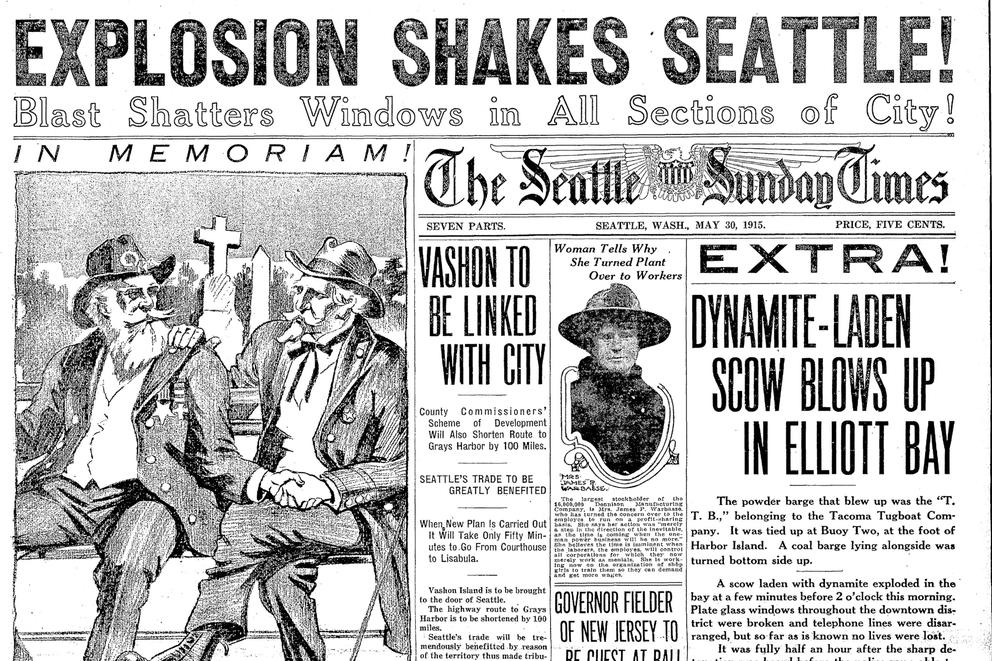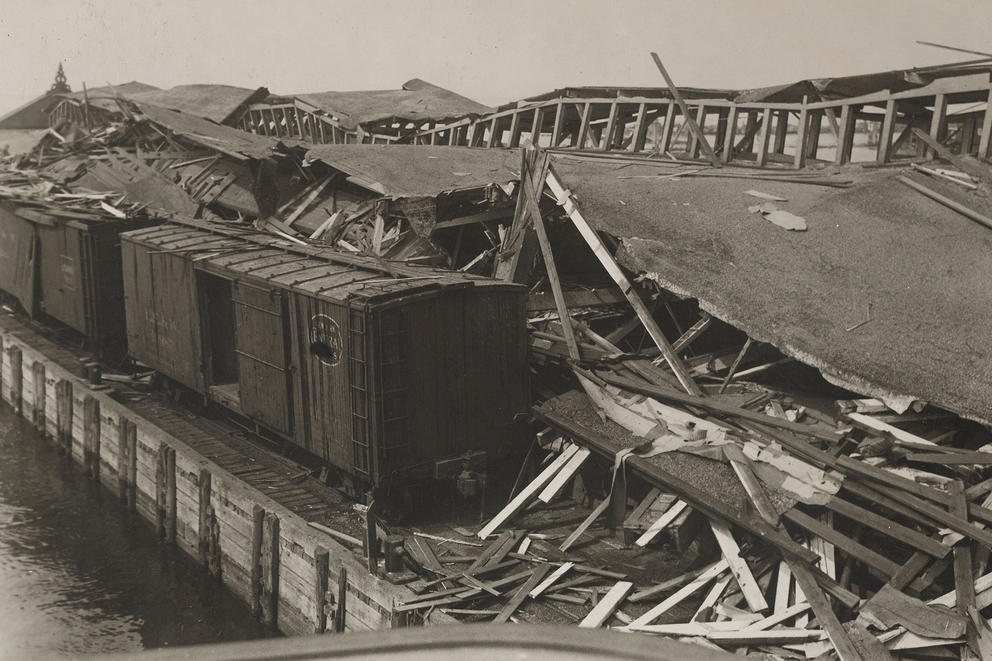In early May 1915, German U-boats were sinking cargo ships and civilian vessels at sea. An attack that had a major impact was the sinking of the British passenger liner, the Lusitania, off the southern coast of Ireland. Nearly 1,200 passengers and crew lost their lives, including 128 Americans. International outrage exploded. There were even so-called “Lusitania riots” as public wrath focused on Germans abroad. In Victoria, B.C., the military was called in to quell a weekend of anti-German rioting.
The coasts were particular targets for sabotage and spying. Busy West Coast ports from San Diego to Seattle were tracked by agents — Americans and Germans — working under the supervision of Germany’s diplomats and military attaches. They tracked rail shipments and freighter cargoes and schemed to plant bombs. A particular focus was war supplies being sent to pre-revolution Russia. A railcar with vehicles destined for Vladivostok was torched in Tacoma. Bombs were ordered placed on outgoing ships.
A cargo of dynamite from San Francisco also destined for Russia was moved to Seattle and placed in a scow anchored at a city buoy in the western waterway of the Duwamish river near Harbor Island. There it awaited loading onto a freighter bound for Vladivostok 622 crates of Hercules dynamite sat covered by a tarp for nearly two weeks.
It was said that German agents were in Seattle and might try something. The owner of the scow said he received a threatening letter. A watchman known only as “Fat” was said to be posted near the load of dynamite to keep an eye on it.
War news filled the newspapers, including coverage of diplomatic fallout from the Lusitania tragedy and the government’s response. On May 29, Seattle was preparing for a Memorial Day celebration on Monday the 31st: A parade of Civil War veterans was planned.
But at about 2 a.m. Sunday morning the 30th, an enormous explosion rocked the city, so loud it was heard and felt from Tacoma to Everett — some said even in Victoria. Plate glass windows were shattered. Glass covered streets from Union Station to Queen Anne Hill, West Seattle to First Hill. Fire alarms blared, some phone lines went down, and shrieking people, some thrown from their beds, filled the downtown streets. Most people, including the police and fire department, had no idea what happened, or where.
Was it an earthquake? A meteorite? Had crooks blown a bank vault? One man yelled that it was a German zeppelin attack.
But the explosion was witnessed. The armored Coast Guard cutter Manning was anchored some 100 yards from the blast. Its Quartermaster, Emile Moen, was standing watch on deck when he heard a small initial explosion followed by a massive one. He saw the scow “lifted on a pillar of flame a hundred feet high and burst into fragments.” The sleeping crew thought the Manning had been torpedoed.
The next day small boats were found smashed, shore-side shacks had collapsed, a flour mill and a Sears warehouse were badly damaged, and dead or stunned fish floated on the water’s surface. Watchman Fat’s fate was unknown, presumed dead.
The scow operator said it had to be sabotage. So did security officials. It was believed a time bomb had been placed aboard the scow. Investigators zeroed in on a German plot.
There were many suspects, including a German, said to be the bombmaker, who shortly after committed suicide in a Seattle hotel rather than be caught. A man named Smith in Tacoma had purchased explosives in Seattle shortly before. He denied involvement, though later admitted to authorities that he had been hired by German agents to commit sabotage. A crackdown on German diplomats, officers and agents ensued — some were tried, convicted and sent to McNeil Island federal penitentiary on Puget Sound, though not for the Seattle blast. Years later, however, Germany paid a claim for the explosion while denying involvement.
German sabotage and plotting continued across North America. Just over a year later, in July 1916 in New York Harbor, German saboteurs blew up the railroad yard. Trains were loaded with war materiel bound for Britain. The bombing did nearly half a billion dollars in damage in today’s money. Shrapnel riddled the Statue of Liberty.
Less than a year later, the U.S. entered the war against Germany. The Espionage Act passed, which allowed the government to vigorously arrest spies and folks with anti-war politics. The German terror campaign that had tried to intimidate the U.S to stay out of the war had failed.
And Seattle was one of the places that heard the loud sound of that sabotage scheme backfiring.





